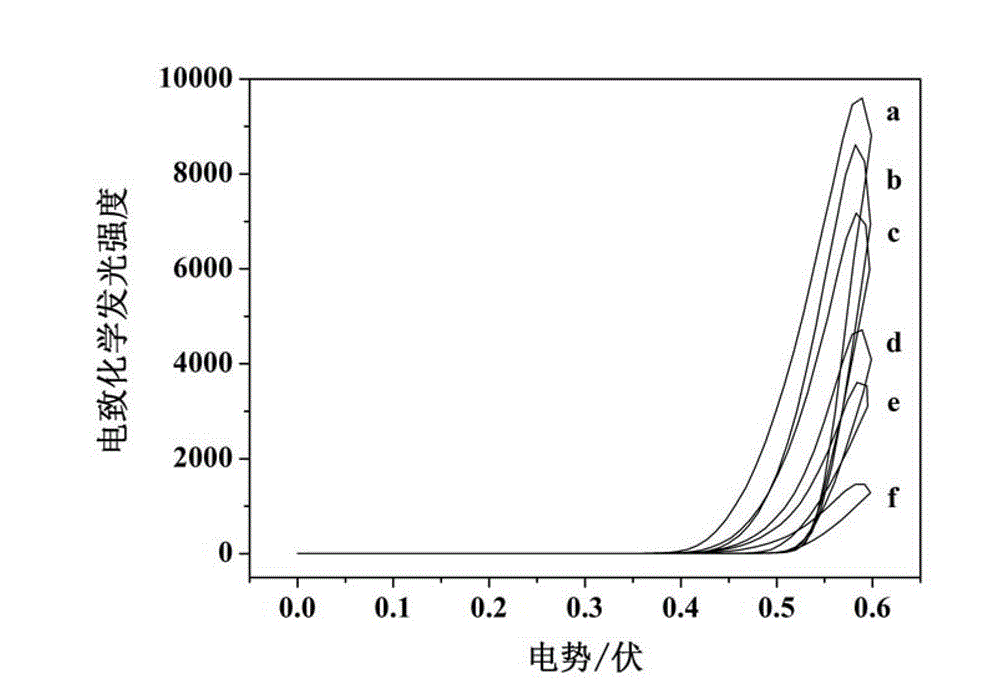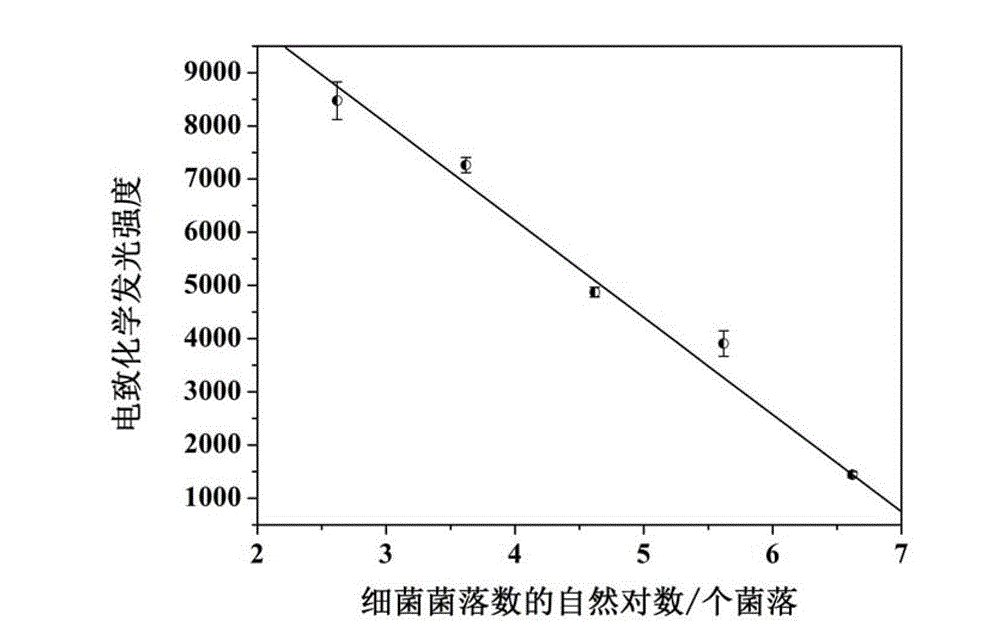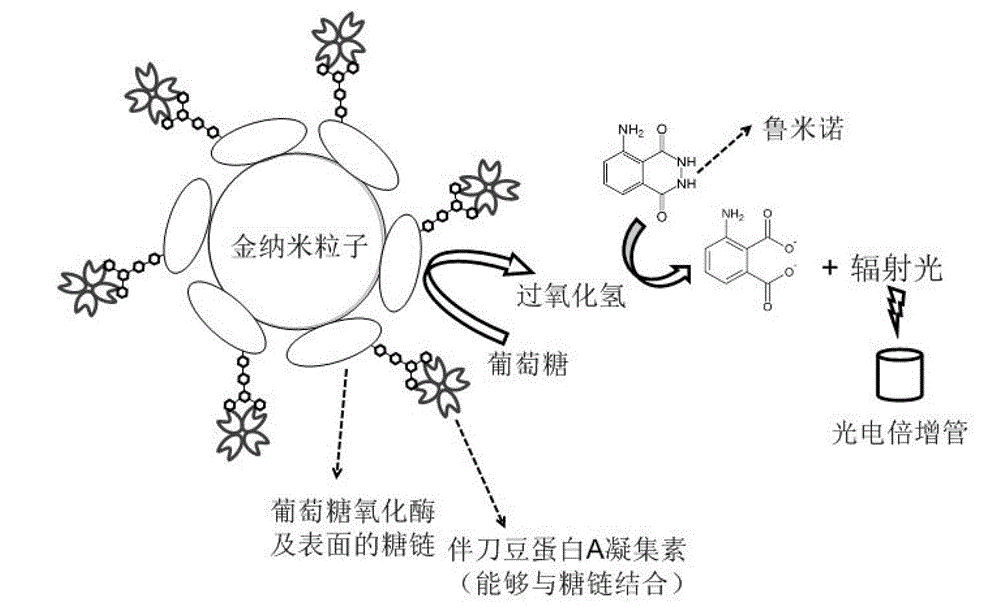Electrogenerated chemiluminescence bacterium sensing method and multi-functional probe
A multi-functional probe and electrochemistry technology, applied in the direction of chemiluminescence/bioluminescence, and analysis by making materials undergo chemical reactions, can solve the problems of expensive, complicated and cumbersome instruments and medicines, and achieve the goal of assembly process. Simple, large catalytic effect, good sensitivity
- Summary
- Abstract
- Description
- Claims
- Application Information
AI Technical Summary
Problems solved by technology
Method used
Image
Examples
Embodiment 1
[0029] Construction of an electrochemiluminescent method for the detection of Escherichia coli ATCC11775 based on a multifunctional probe:
[0030] a. Probe preparation:
[0031] All glassware used for the preparation of gold nanoparticles was first soaked in aqua regia for 24 h and then rinsed with deionized water. Add 92.5 milliliters of deionized water and 2.5 milliliters of chloroauric acid with a concentration of 4 grams per milliliter to a 250 milliliter three-neck flask, stir and heat until liquid droplets evenly return to the flask in the condenser tube. Add 5 ml of trisodium citrate dihydrate with a concentration of 10 mg per ml, stop heating after 15 minutes, then stir and cool to room temperature, and store at 4°C.
[0032] Before each experiment, take 3 ml with a concentration of 1.87×10 -9 Add 3 mg of glucose oxidase per liter of gold nanometer solution, and stir at room temperature for 24 hours. Centrifuge at 10,000 rpm for 10 minutes, wash with deionized wate...
Embodiment 2
[0041] Construction of an electrochemiluminescent method for detecting Pseudomonas aeruginosa ATCC27853 based on a multifunctional probe:
[0042] a. Probe Preparation
[0043] All glassware used for the preparation of gold nanoparticles was first soaked in aqua regia for 24 h and then rinsed with deionized water. Add 92.5 milliliters of deionized water and 2.5 milliliters of chloroauric acid with a concentration of 4 grams per milliliter to a 250 milliliter three-neck flask, stir and heat until liquid droplets evenly return to the flask in the condenser tube. Add 5 ml of trisodium citrate dihydrate with a concentration of 10 mg per ml, stop heating after 15 minutes, then stir and cool to room temperature, and store at 4°C.
[0044] Before each experiment, take 3 ml with a concentration of 1.87×10 -9 Add 3 mg of glucose oxidase per liter of gold nanometer solution, and stir at room temperature for 24 hours. Centrifuge at 10,000 rpm for 10 minutes, wash with deionized water,...
PUM
| Property | Measurement | Unit |
|---|---|---|
| particle size | aaaaa | aaaaa |
Abstract
Description
Claims
Application Information
 Login to View More
Login to View More - R&D
- Intellectual Property
- Life Sciences
- Materials
- Tech Scout
- Unparalleled Data Quality
- Higher Quality Content
- 60% Fewer Hallucinations
Browse by: Latest US Patents, China's latest patents, Technical Efficacy Thesaurus, Application Domain, Technology Topic, Popular Technical Reports.
© 2025 PatSnap. All rights reserved.Legal|Privacy policy|Modern Slavery Act Transparency Statement|Sitemap|About US| Contact US: help@patsnap.com



